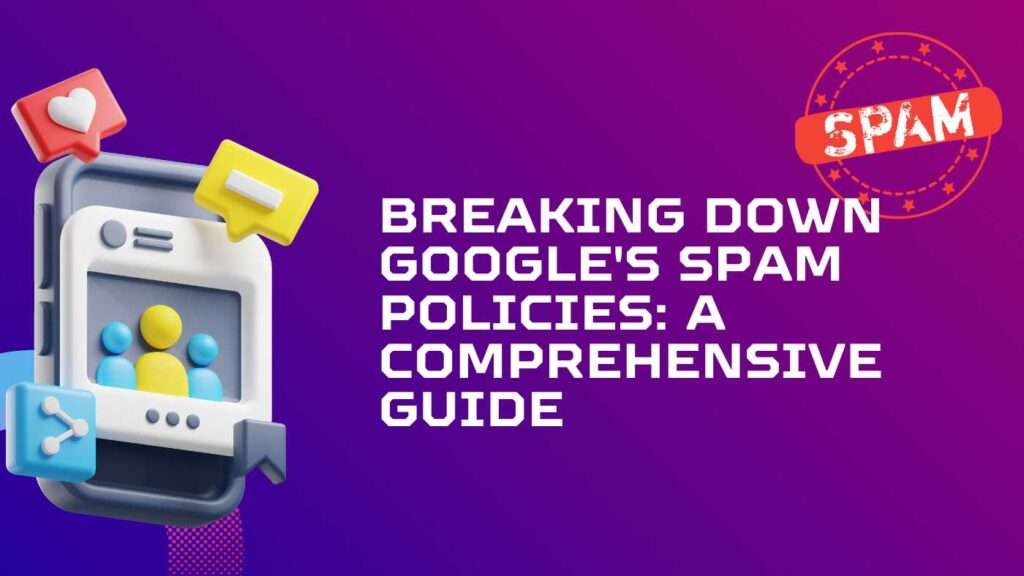Introduction
Staying on top of Google’s core updates is essential for maintaining your website’s visibility and relevance. The recent March 2024 Google Core Update has shaken up the search engine rankings, leaving many website owners scrambling to recover lost traffic and rankings. If your website has been negatively impacted by this update, don’t panic. In this article, we will explore five effective strategies to help you recover and thrive in the wake of the March 2024 Google Core Update.
1. Conduct a Comprehensive Website Audit
When faced with a drop in rankings after a core update, the first step is to conduct a thorough audit of your website. Identify any technical issues, broken links, or outdated content that could be negatively impacting your site’s performance. Use tools like Google Search Console and Google Analytics to gain insights into your website’s traffic, user behavior, and overall health. By addressing these issues, you can improve your website’s user experience and boost its chances of recovering from the update.
Key Points
- Check for indexing issues and ensure all pages are properly crawled and indexed by Google.
- Analyze your website’s loading speed and mobile-friendliness to meet Google’s ranking criteria.
- Remove any low-quality or duplicate content that could be dragging down your website’s rankings.
2. Focus on High-Quality Content Creation
One of the most crucial aspects of recovering from a Google Core Update is to prioritize the creation of high-quality, relevant content. Update your existing content with fresh, valuable information that aligns with the search intent of your target audience. Conduct keyword research to identify trending topics and incorporate long-tail keywords to improve your website’s visibility in search results. By consistently producing high-quality content, you can attract more organic traffic and establish your website as a trusted authority in your niche.
Key Points
- Create in-depth, comprehensive content that answers user queries and provides valuable insights.
- Optimize your content for featured snippets and rich snippets to increase visibility in search results.
- Leverage multimedia elements like videos, infographics, and images to enhance user engagement and retention.
3. Build High-Quality Backlinks
Backlinks play a crucial role in improving your website’s authority and credibility in the eyes of search engines. Focus on building high-quality backlinks from reputable websites in your industry to signal to Google that your website is a trustworthy source of information. Invest in outreach campaigns, guest blogging opportunities, and partnerships with influencers to acquire authoritative backlinks that can boost your website’s rankings and traffic.
Key Points
- Avoid spammy or manipulative backlink tactics that can harm your website’s reputation and rankings.
- Monitor your backlink profile regularly and disavow any toxic or irrelevant backlinks that could be affecting your website’s performance.
- Focus on earning natural backlinks through valuable content and genuine relationships with other websites.
4. Enhance User Experience and Site Performance
User experience is a critical ranking factor that can significantly impact your website’s performance after a Google Core Update. Ensure that your website is easy to navigate, mobile-responsive, and optimized for fast loading speeds. Improve your site’s overall design, layout, and functionality to create a seamless browsing experience for visitors. By prioritizing user experience and site performance, you can increase engagement, reduce bounce rates, and improve your website’s chances of recovering from the update.
Read More: Google Search Updates 2024
Key Points
- Optimize your website’s navigation and menu structure to help users find information quickly and easily.
- Implement responsive design principles to ensure your website looks and functions well on all devices.
- Minimize page load times by optimizing images, content, and server response times for a smooth user experience.
5. Monitor Performance and Adapt Your Strategy
Recovering from a Google Core Update is an ongoing process that requires monitoring, analysis, and adaptation. Track your website’s performance using tools like Google Analytics, Ahrefs, or SEMrush to measure changes in traffic, rankings, and user behavior over time. Stay informed about industry trends, algorithm updates, and best practices to adapt your SEO strategy accordingly. By continuously monitoring your website’s performance and making data-driven decisions, you can recover from the March 2024 Google Core Update and position your website for long-term success.
Key Points
- Set up regular reporting and monitoring systems to track key performance indicators and metrics.
- Stay up to date with Google’s official announcements and guidelines for webmasters to align your strategy with best practices.
- Experiment with different SEO tactics, methodologies, and strategies to identify the most effective approach for your website.
Conclusion
Recovering from a Google Core Update can be a challenging and time-consuming process, but with the right strategies and approach, you can restore your website’s visibility and rankings. By conducting a comprehensive website audit, focusing on high-quality content creation, building authoritative backlinks, enhancing user experience, and continuously monitoring performance, you can recover from the impact of the March 2024 Google Core Update and position your website for sustainable growth. Remember to stay patient, persistent, and adaptive in your SEO efforts to navigate through algorithm updates successfully.
“Adaptability is key in the dynamic world of digital marketing. Stay informed, stay agile, and stay ahead of the curve to recover and thrive post-Google Core Update.”





